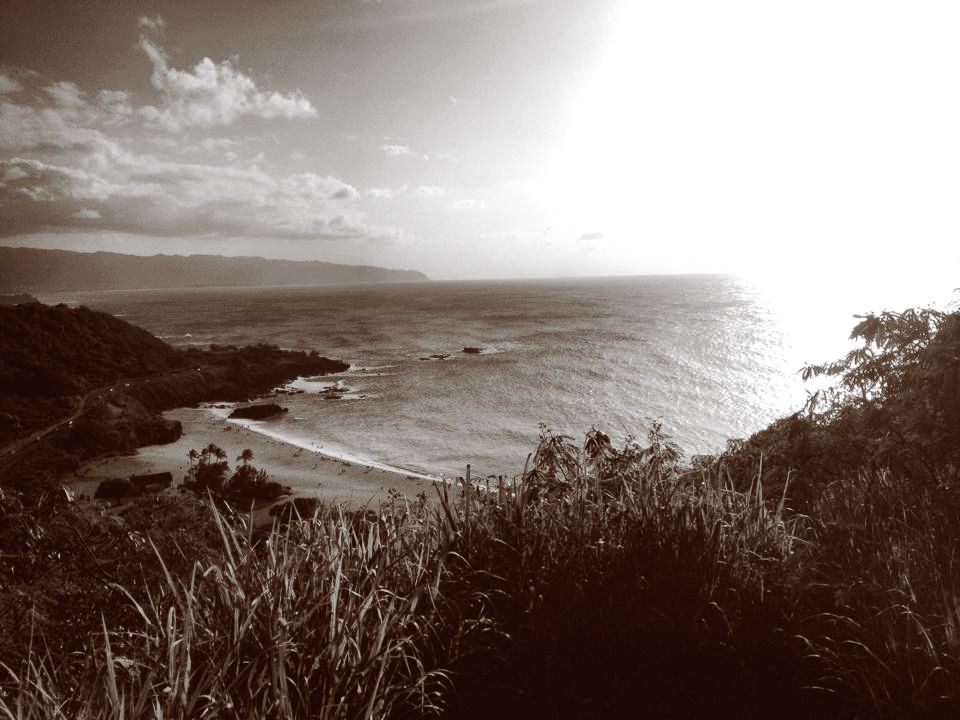Original blog post and information found at Locations LLC
Yes, the North Shore boasts the reputation as the birthplace of big wave riding. But make no mistake, it’s overflowing with history and culture in Pupukea, Waimea Valley, Haleiwa, Kawailoa, and Waialua.
A storied past that’s often had one foot dangling in history and the other one treading on toward the future, remains unchanged. There’s more to the North Shore than surfing. The tangle of smaller, laid back communities steeped in history, also offer a much more relaxed lifestyle than might be found in Honolulu.

Photo: Pu’u o Mahuka Heiau State Historic Site
Hawaiians settled in the Waialua and Ko’olauloa Districts along the North Shore around 1100 AD, establishing villages along valleys, streams, and bays. Drawn to the area by the rich ocean waters and fertile lands dotted with natural springs, the inhabitants grew taro and sweet potato, thus the North Shore became home to ancient Hawaiian communities that thrived at ocean/land/river confluences such as the Anahulu River and Waimea Valley.
In much earlier times, Hawaiians divided land into ahupua’a – natural divisions from the mountains through river valleys to the sea that contained everything necessary to sustain life.
Life slowly began to change. The first Westerners aboard Captain Cook’s ship, and needing to replenish fresh water supplies, briefly anchored and went ashore at Waimea Bay in 1779. The area around Waimea River, the crew reported, “was well cultivated and full of villages and the face of the country is uncommonly beautiful and picturesque.” Just as it remains today.
The arrival of Protestant missionaries Reverend John and Ursula Emerson in the Waialua District in 1832 marked the establishment of the first Western settlement.
The Emersons landed at Waialua Bay – the mouth of the Anahulu River – where the Anahulu (or Haleiwa) Bridge is found today. They eventually established Emerson House, and the Queen Liliuokalani Protestant Church in the heart of the village, named for Protestant Hawaii’s last queen, who worshiped there.

Photo: Waimea Valley
The ancient kahuna land system was overthrown in a great land division known as the ‘Great Mahele’ in the mid-1800s, and the western system of land titles and deeds signaled the start of private land ownership. With private ownership came the sugar cane and pineapple plantations, which dominated the economy for 100 years.
Waimea Valley, inland down the shore, burgeons with historical significance. The valley sits as a place of religious significance and a unique charm for both visitors and residents.
Haleiwa, with its population of about 4,000 sits as the largest commercial center and gateway to Hawaii’s North Shore. The area’s old plantation character has been preserved in its many buildings.
Construction of the Haleiwa Hotel, at the end of the 19th Century, by the wealthy, visionary businessman Benjamin J. Dillingham became the impetus for the town’s growth.
Dillingham obviously envisioned a future for the North Shore as promoter of real estate and railways. The Haleiwa Hotel stood like a sentinel at the end of his railroad line, which of course, serviced the sugar plantations. Obviously this enabled him to further capitalize on his investment, as did his directorship with the Waialua Sugar Co.
The weekend getaway to the Haleiwa Hotel became hugely popular with city residents who enjoyed their time in the country away from the businesses of Honolulu. The $10 round-trip, two-day excursion by train from Honolulu to Haleiwa included an overnight stay at the Haleiwa Hotel and a trip through Waialua sugar mill. A tour through the plantations rounded out the visitors’ trip.

Photo: View of Waimea Bay
Historically, the agricultural and commercial development did play a significant role in the area as the growing influx of people arrived to meet the increasing commercial labor demands.
The sugar companies in particular, required help, so Chinese, Japanese, Korean, Portuguese, Norwegian, Scotsmen and Filipino laborers signed on for work.
Other enterprising people started their own businesses including laundries, vegetable and meat markets, tailor shops, barbershops, restaurants, and other commercial ventures.
Today, many of the early business families and their original business buildings remain in Haleiwa. Although some of the town’s buildings remain protected landmarks, Dillingham’s hotel and railway have disappeared into the historical past.
Pupukea, meaning ‘white shell’, and its population of approximately 5,000 remains a popular area to live, visit and play. There are inviting residential areas, especially along Sunset Beach. A longer commuting distance to Honolulu might be seen as a drawback for some, but the popular location on the North Shore and closeness to the inviting surf venues remains ‘the draw.’
Waialua sits as one of six original districts of ancient Hawaii, and the town today with a population of about 4,000, remains quite different in its quiet ambience from the more commercial oriented Haleiwa.
It its early days, the growing agricultural industry attracted workers as it did in Haleiwa, and today many of their descendants remain.
Real Estate on the North Shore Today
Today, the North Shore boasts a population of about 16,000, who find the area’s charm and reputation so attractive.
The North Shore’s somewhat remote location, spectacular views, and laid-back lifestyle harness the charm that lures families to the area. Still change has happened slowly and gradually over the years.
Families have slowly moved to Oahu’s North Shore from its earliest beginnings years ago. Along the North Shore about 30 homes are over 100 years old, with the oldest on record built in 1890…125 years ago.
Families living in 4,314 homes now call the North Shore home. Home construction has been relatively steady with between 300 to 700 homes built every 10 years since 1930. About 43 percent of these single-family homes are owner-occupied.
There are 828 condos on the North Shore with most built in the 1970s, of which 15 percent are owner-occupied today.
Although the number of condominiums have wavered little since tracking first began in 1977, the average value of each sales has increased significantly over the years. In 1977, six condos sold for an average price of $40,750. In 2014, 51 condominiums sold for an average price of $336,000.
In 1977, 35 single-family homes sold for an average $78,000. This reached a high of 127 homes in 2005, and an average selling price of $907,500.
In 2014, 104 single-family homes netted an average selling price of $752,500, which on average sold for 98 per cent of the list price.
Find home for sale on the North Shore contact us.



